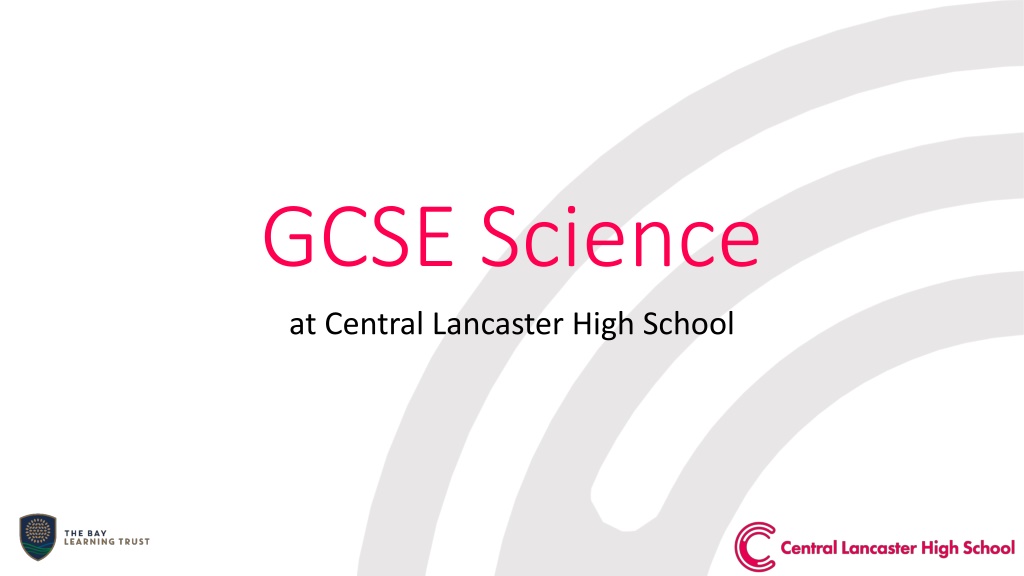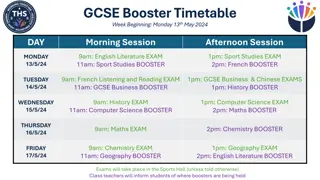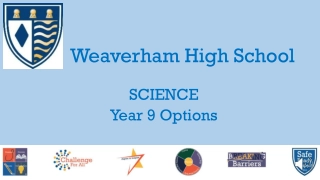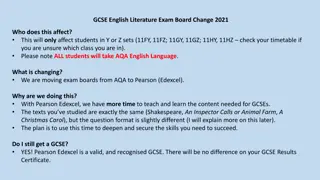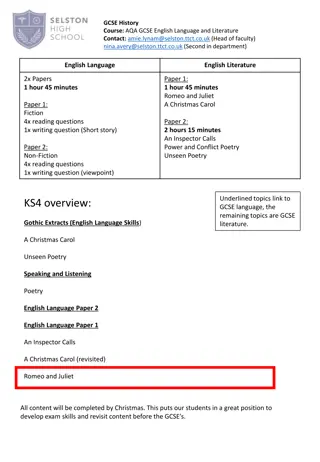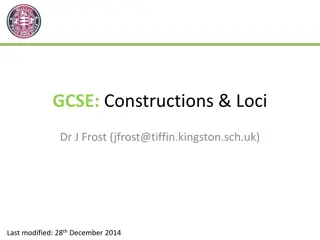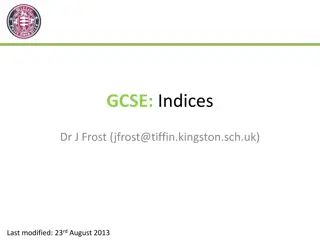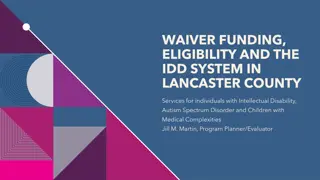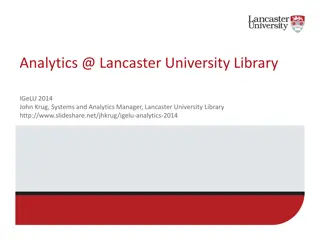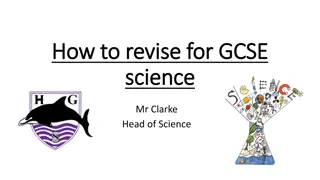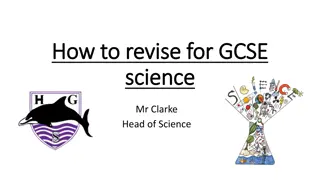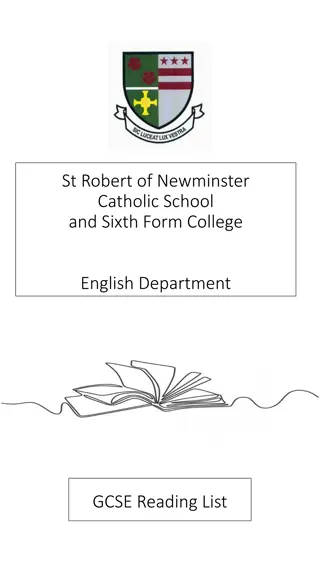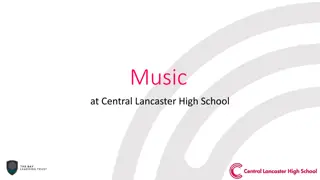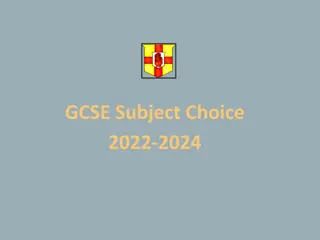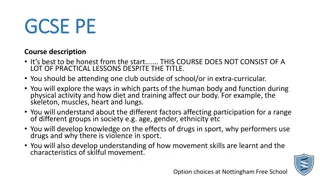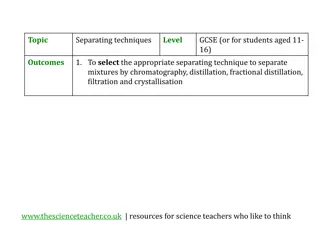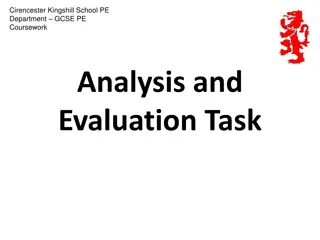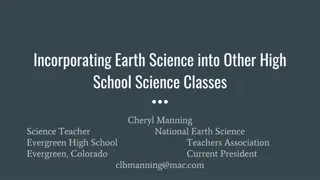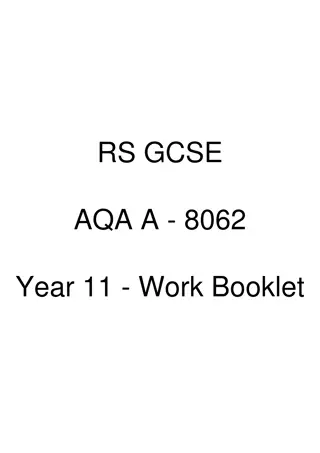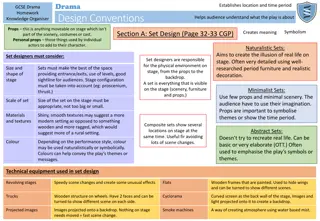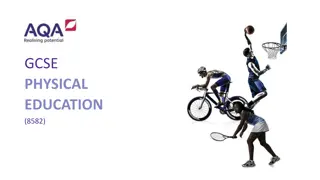GCSE Science at Central Lancaster High School
Science at Central Lancaster High School offers students the choice between Combined Science and Separate Science. The curriculum covers biology, chemistry, and physics principles, enhancing students' understanding of the world. Practical skills are integrated into examinations, ensuring comprehensive assessment. Year 10 covers content for Paper 1 exams, with Paper 2 content in Year 11. The assessment includes exams in Biology, Chemistry, and Physics, with equal weighting for each. Students will receive two GCSE grades within one grade of each other. AQA Separate Sciences provide a more detailed study of Biology, Chemistry, and Physics.
Download Presentation

Please find below an Image/Link to download the presentation.
The content on the website is provided AS IS for your information and personal use only. It may not be sold, licensed, or shared on other websites without obtaining consent from the author. Download presentation by click this link. If you encounter any issues during the download, it is possible that the publisher has removed the file from their server.
E N D
Presentation Transcript
GCSE Science at Central Lancaster High School
Science Options Science Options Science is a core subject and so therefore must be studied by everyone. However there is a choice between Combined Science (2 GCSEs) and Separate Science (3 GCSEs). Understanding key scientific principles helps to explain the world around you and enables you to make informed decisions.
AQA Combined Science (Trilogy) AQA Combined Science (Trilogy) This covers the core scientific content required to study at KS4. Students will be taught biology, chemistry and physics in separate lessons by subject specialists.
Content Content Biology 1. Cells 2. Organisation 3. Infection and response 4. Bioenergetics 5. Homeostasis 6. Inheritance and evolution 7. Ecology Chemistry Physics 1. Atomic Structure 2. Bonding 3. Quantitative chemistry 4. Chemical change 5. Energy changes 6. Rates of reaction 7. Organic Chemistry 8. Chemical analysis 9. Atmosphere 10. Using resources 1. Energy 2. Electricity 3. Particle model 4. Radiation 5. Forces 6. Waves 7. Magnets
In year ten the students study all of the content required for the paper 1 examinations. The content for the paper 2 examinations is covered in year eleven. Practical skills are assessed in the written examinations. Assessment objectives AO1: 40% Demonstrate knowledge and understanding of: 1) Scientific ideas. AO3: 20% Analyse information and ideas to: 1a) Interpret. 1b) Evaluate. 2a) Make judgements. 2b) Draw conclusions. 3a) Develop experimental procedures. 3b) Improve experimental procedures. 2) Scientific techniques and procedures. AO2: 40% Apply knowledge and understanding of: 1) Scientific enquiry, techniques and procedures.
Assessment Assessment At the end of Year 11 students will sit 6 exams each 1 hour 15 minutes long. Each exam has equal weighting and will be worth 16.7% of the final grade. These can be higher tier (grades 4-3 to 9-9) or foundation tier (grades 1-1 to 5-5). Biology 1 (units 1-4), Biology 2 (units 5-7), Chemistry 1 (units 1-5), Chemistry 2 (units 6-10), Physics 1 (units 1-4) and Physics 2 (units 5- 7). Students will receive 2 GCSE grades that will be within 1 grade of each other e.g. 4-4, 5-4, 5-5
AQA Separate Sciences AQA Separate Sciences Biology, Chemistry and Physics Biology, Chemistry and Physics GCSE Separate Sciences offers students a chance to gain a more in depth knowledge of Chemistry, Biology and Physics and to build on areas covered in combined Science in more detail as well as covering extra content. This course is great preparation for studying Science at A level, under-graduate and post-graduate degree level.
Additional Content Additional Content Biology Chemistry Physics 1. Monoclonal antibodies (B3) Plant diseases and defences (B3) The brain (B5) The eye (B5) The kidneys (B5) Plant hormones (B5) Protein synthesis (B6) History of genetics (B6) Food security and farming (B7) 10. Biotechnology (B7) 1. 2. Nanotechnology (C2) Atom economy and percentage yield (C3) Titrations (C4) Fuel cells (C5) Alkenes, alcohols, carboxylic acids (C7) Polymers (C7) Ion tests (C8) Properties of materials (C10) Haber process and fertilisers (C10) 1. 2. Static electricity (P2) Nuclear fission and fusion (P4) Moments (P5) Pressure (P5) Sound waves and ultrasound (P6) Earthquakes (P6) Lenses (P6) Generators, loudspeakers, microphones (P7) Space (whole unit P8) 2. 3. 4. 5. 3. 4. 5. 3. 4. 5. 6. 7. 8. 9. 6. 7. 8. 6. 7. 8. 9. 9.
Assessment Assessment At the end of Year 11 students will sit 2 exams for each science. All exams are 1 hour 45 minutes long and worth 50% of the final grade. These can be higher tier (grades 4-9) or foundation tier (grades 1-5). Biology 1 (units 1-4), Biology 2 (units 5-7), Chemistry 1 (units 1-5), Chemistry 2 (units 6-10), Physics 1 (units 1-4) and Physics 2 (units 5- 8). Students will receive 1 GCSE grade for each of the sciences.
Pathways post Pathways post- -16 Separate science courses can lead on to study at A-Level and beyond. 16 Careers in medicine, veterinary science, mechanical engineering, nursing, midwifery, child care, sports science, meteorology, architecture, chemical engineering and horticulture are accessible through successful completion of this course.
For more information about the course, please speak to your child s science teacher at progress evening on Thursday 14th March 2024 or you can contact me via email on amiddleton@lancasterhigh.lancs.sch.uk
